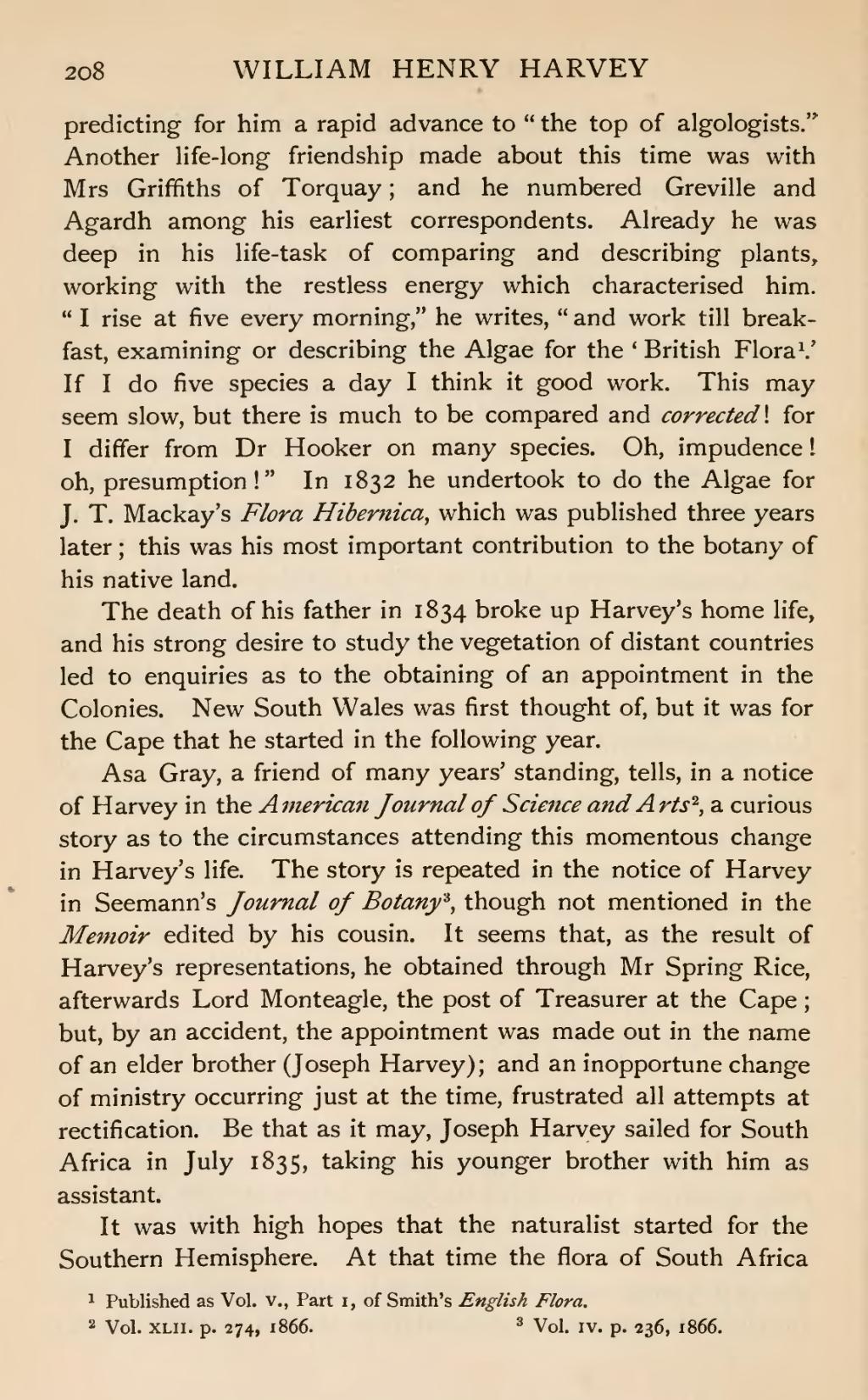predicting for him a rapid advance to "the top of algologists." Another life-long friendship made about this time was with Mrs Griffiths of Torquay; and he numbered Greville and Agardh among his earliest correspondents. Already he was deep in his life-task of comparing and describing plants, working with the restless energy which characterised him. "I rise at five every morning," he writes, "and work till breakfast, examining or describing the Algae for the 'British Flora[1].' If I do five species a day I think it good work. This may seem slow, but there is much to be compared and corrected! for I differ from Dr Hooker on many species. Oh, impudence! oh, presumption!" In 1832 he undertook to do the Algae for J. T. Mackay's Flora Hibernica, which was published three years later; this was his most important contribution to the botany of his native land.
The death of his father in 1834 broke up Harvey's home life, and his strong desire to study the vegetation of distant countries led to enquiries as to the obtaining of an appointment in the Colonies. New South Wales was first thought of, but it was for the Cape that he started in the following year.
Asa Gray, a friend of many years' standing, tells, in a notice of Harvey in the American Journal of Science and Arts[2], a curious story as to the circumstances attending this momentous change in Harvey's life. The story is repeated in the notice of Harvey in Seemann's Journal of Botany[3], though not mentioned in the Memoir edited by his cousin. It seems that, as the result of Harvey's representations, he obtained through Mr Spring Rice, afterwards Lord Monteagle, the post of Treasurer at the Cape; but, by an accident, the appointment was made out in the name of an elder brother (Joseph Harvey); and an inopportune change of ministry occurring just at the time, frustrated all attempts at rectification. Be that as it may, Joseph Harvey sailed for South Africa in July 1835, taking his younger brother with him as assistant.
It was with high hopes that the naturalist started for the Southern Hemisphere. At that time the flora of South Africa
- ↑ Published as Vol. V, Part I, of Smith's English Flora.
- ↑ Vol. XLII. p. 274, 1866.
- ↑ Vol. IV. p. 236, 1866.
